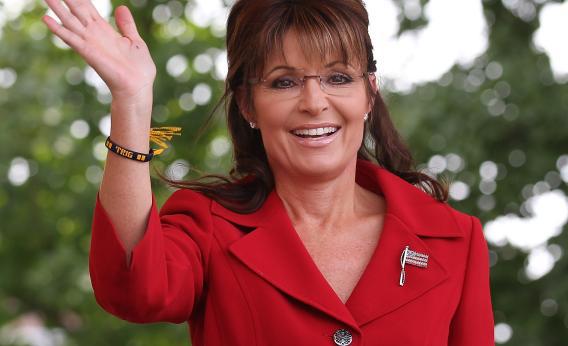Much to my own surprise, I’m slightly disappointed that Sarah Palin isn’t running. Yes, there are plenty of good reasons—for women, for Republicans, for humanity, maybe even (counterintuively) for Democrats—that she isn’t. But there would also have been some good things about a Republican primary race in which two female household names, Palin and Michele Bachmann, ran against each other.
In the 2010 general election cycle, we saw 14 congressional and gubernatorial races in which one woman ran again another. It wasn’t a record on this count—there were 15 such races in 1998—but it was still an increase over any election year in the past decade, and it included vigorous contests such as Barbara Boxer v. Carly Fiorina and Susana Martinez v. Diane Denish, among many others.
For many voters, these races were the first time they had seen a woman run for high-level office without being the woman candidate in a two-way matchup, but rather, a candidate who was also woman. It was the first time they weren’t choosing between two men, or a man and a woman, but two women. It was the first time, in other words, that they didn’t have the luxury of voting for or against a woman, whether consciously or subconsciously, in whole or in part, because she was a woman.
This isn’t to say that these races are free gender weirdness (see: Fiorina’s nasty ads implying that Boxer was uppity for wanting to be called “Senator” rather than “Ma’am”). And it isn’t to ignore the fact a Palin-Bachmann race would have invited all sorts of really cringe-worthy “Look! A cat fight!”-style coverage. It would have. (And yet: I’m pretty confident that no woman running against another woman has ever said something nasty about what her opponent might look like naked, as Scott Brown did today about Elizabeth Warren.)
But caveats aside, a race featuring both Palin and Bachmann might have gone a long way toward diffusing the intense stiltedness that tends to hang over presidential debates featuring a lone woman. After all the talk in 2008, when Hillary Clinton was running for the Democratic nomination, and again this summer, when Bachmann joined the GOP race, about how debating a woman presidential candidate poses a sticky strategic dilemma for a male candidate, I was looking forward to the spectacle of a series of Romney-Bachmann-Perry-Palin-Cain melees in which women (plural) would be going after men, and men after women (again, plural), and women after women. In the process, the awkwardness many male candidates seem to be stricken with when it’s time to go after a female opponent on live TV might have dissipated. (Tim Pawlenty’s easy sparring with Michele Bachmann in his final debate being a most excellent example of what this future might have promised.)
Last November, Emily Bazelon asked whether what felt new and striking that year—“women running against women”—might soon seem ordinary. “Will we arrive at that point before one of the major parties chooses to run a woman for president?” she wondered. “Or is that merely a matter of time, and can we look beyond it to the heady prospect of two women running against each other?” It’s won’t be this cycle, but maybe next time. Ordinary is happening so fast. When Bachmann won the Ames Straw Poll this summer, barely anyone commented on the fact that she was the first woman to do so. Next time, maybe she’ll have a female competitor, and maybe that fact, too, will merit little comment.
